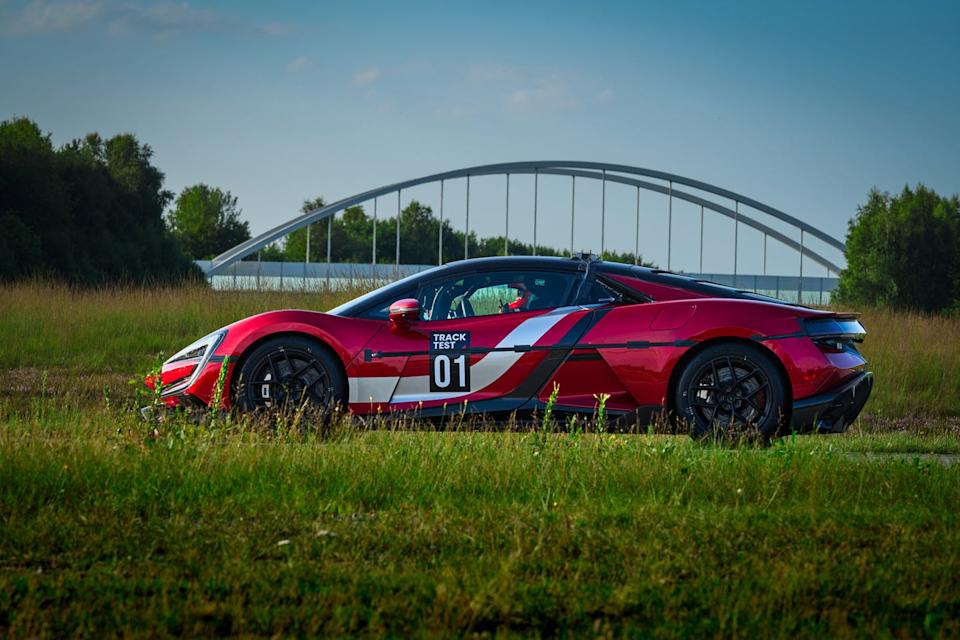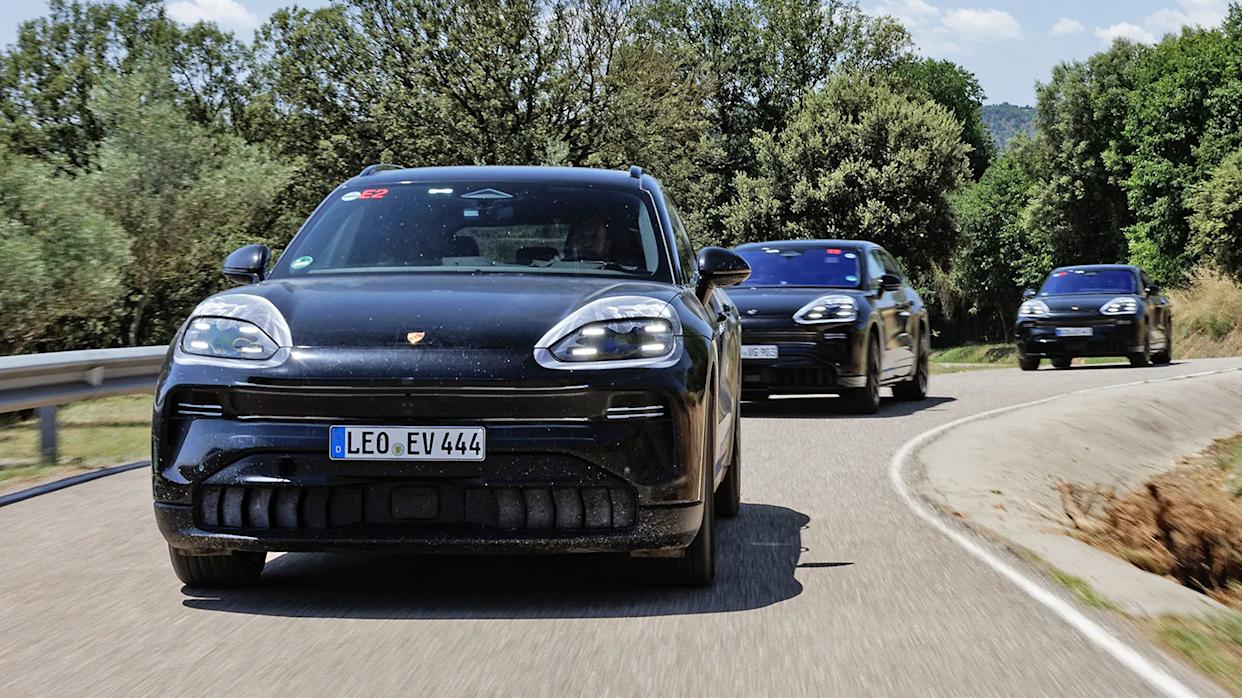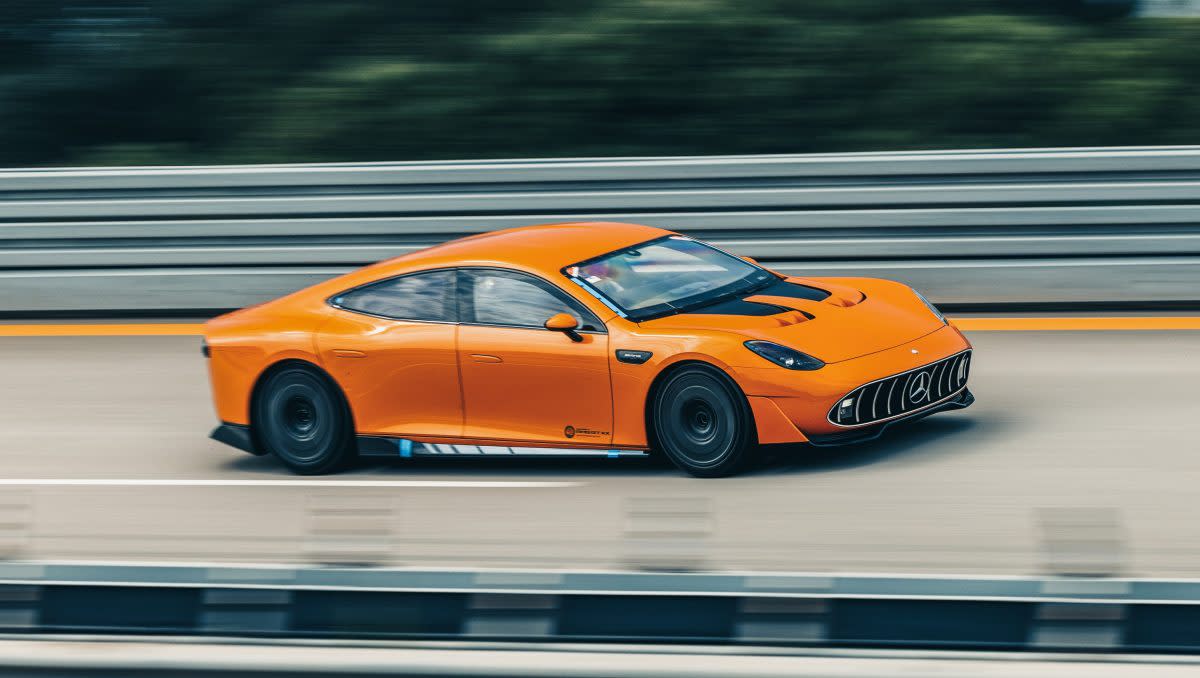
The YangWang U9 Track Edition just reached a top speed of 293.54 mph at a test track in Germany.
Parent company BYD claims that this makes it the fastest electric car, beating out previous records set by the Rimac Nevera R and Aspark Owl.
The U9 features a quad-motor electric powertrain producing over 2959 horsepower, with the motors capable of spinning at up to 30,000 rpm.
There's a new player in the hypercar space, and it just set a pretty impressive record to announce its arrival on the global stage. You may not have heard of YangWang, but you'll likely be familiar with its parent company, BYD, which is among the biggest car companies in the world and is leading China's widespread adoption of electric vehicles. YangWang, which focuses on luxury performance cars, launched its U9 hypercar in 2024 and now set what it claims is a new top-speed record for EVs.
The YangWang U9 reached 293.54 mph at the ATP Automotive Testing Papenburg track in Germany on August 8, the brand announced today. The automaker used the U9 Track Edition, a special configuration of its electric hypercar, to complete the record and now claims the title of the fastest EV in the world.
This makes it quicker than the Rimac Nevera R, which hit a top speed of 268 mph in July, and the limited-production Aspark Owl, a Japanese EV that reached 272 mph in November 2024. The U9 was driven by German racer Marc Basseng, who previously competed in endurance racing and touring car championships, and the Papenburg track is the same facility that Chevrolet recently used to hit 233 mph in the Corvette ZR1.
To achieve this feat, the U9 Track Edition features an impressive quad-motor electric powertrain, each motor contributing a peak of 744 horsepower for a combined output of over 2959 hp. That's a fair bit more than the standard U9, which makes do with 1287 horsepower. The four motors work together as part of an independent torque-vectoring system, adjusting the torque at each wheel over 100 times per second. The motors can spin at up to 30,000 rpm, key to helping the YangWang reach such high speeds. The company didn't provide more details on how it gets the motors to survive such high speeds, but remember when Tesla launched the Model S Plaid, which needed carbon-fiber-sleeved rotors to get to 20,000 rpm.
The Track Edition model used for the record-setting run also features a more extreme carbon-fiber front splitter and appears to have ditched the U9's massive rear wing to reduce drag at such brain-melting speeds.

The U9 also features what BYD calls the DiSus-X Intelligent Body Control System, which makes constant, quick, independent suspension adjustments during acceleration and cornering to minimize pitch and roll and maximize the contact patch between the tires and road for the most grip possible. This system also allows the U9 to perform theatrics like jumping entirely off the ground.
YangWang says that it used a special track-focused semi-slick tire for the top speed run, developed in collaboration with Indonesian company Giti Tire. The company states that this tire's compound and unique tread design are paired with a special "knurling treatment at the wheel-rim interface" to reduce slippage between the tire and rim during aggressive acceleration and braking, making the car more stable.
It appears that BYD only completed the top speed run in one direction; typically, top speed records are averaged from two runs in opposite directions, such as the 277.9 mph result achieved by the Koenigsegg Agera RS in 2017. Regardless, the YangWang U9's 293.54 mph Vmax is incredibly impressive and demonstrates that BYD is serious about competing with the best automakers from Europe and the U.S. Watch out, Bugatti and Koenigsegg.
You Might Also Like







Comments